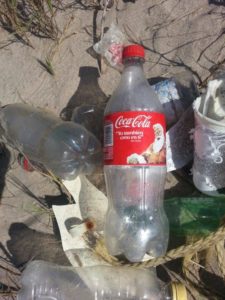 There are millions of labels out there! But, every so often, you come upon a real brand. It’s not so much what the label looks like as it is what the brand stands for in your mind. The best brand builders have done an effective job of conveying what you can expect, not just from the products under that label, but what you can expect from the company behind that label. Now that’s a brand!
There are millions of labels out there! But, every so often, you come upon a real brand. It’s not so much what the label looks like as it is what the brand stands for in your mind. The best brand builders have done an effective job of conveying what you can expect, not just from the products under that label, but what you can expect from the company behind that label. Now that’s a brand!
The Difference Between a Brand and a Label
A label consists of a name, a logo, specific copy that identifies the contents, a catch phrase, some accolades, and a few other pieces of required commercial information including size, weight, and legal requirements. It also contains a color scheme, font styles, spaces and borders. With all that and the size limitations of the label, there’s not room for much else. That’s a label.
A brand is simply what the labeled product and its company stands for in your mind. You know this because of various personal and secondhand experiences you have had with products selling under that brand’s label(s). You know this because of the marketing campaigns coming from the producer, and because of what has been published about the company and their products in the press. It’s much more comprehensive than a label. In fact, due to widespread label recognition, the company’s behavior can actually hurt the label, and thus sales!
Corporate Constipation Blocks Brand Promise
As a brand grows, it begins to be influenced by the implications of its own success. The feisty garage company that started the brand has now transformed into a large sluggish corporation. Now there are efficiencies of scale, divisions of labor and specialization.
In the name of efficiency, some concepts are lost. Standardization, structure, and compliance win out over innovation, distinction, and even conscience. Suggestions from staffers, bucking for a promotion, begin to resemble, “Why don’t we just reduce our quality, standardize our label, or go to single use plastic containers. No one will notice. And with these sales, just do the math, we’ll save millions!”
But will the sales really remain the same? Will your customers really not notice the degradation of your brand? Or are you now opening the door for a more relevant brand to eat away at your market share? This is where the label begins to represent something the brand should not want: The behavior of their company effects the perception of the brand and the label is the consumers’ identification with that brand. In the consumer’s mind, the company has broken the brand promise and the label is a constant reminder of that breach. Now the market may say, “That used to be my brand, but they cheapened it,” or “That brand is hurting the environment!”
The Coca-Cola Brand Takes a Hit!
We recently read with astonishment that such an American iconic brand as Coke has decided to continue to produce its products in single use plastics. They cite the demand and even say that plastic containers have a smaller carbon footprint. How does that square with consumers who increasingly read about the growing amount of microplastics now getting into the oceans, waterways, food supplies, and ultimately their own bodies?
This is a classic example of a well-established commercial label deciding to compete in the single-use plastic market rather than lead their customers in a direction supported by the latest environmental realities. It’s like saying the consumers will never change. Relevance in consumer brand building requires not only sensitivity to the ever-changing attitudes and desires of your customers, it also requires a degree of leadership that provides your customers with an earth-friendly alternative. Relevance is a moving target, and now its moving away from single-use plastics. Period!
Conclusion
Brands are a perception of the company. Labels identify the product. Companies may own the labels, but the customer owns the brand promise, not the company. Labels can work for or against you depending on how your company behaves. If the customer perceives that you have broken the brand promise, they will shop elsewhere. Staying relevant is not a destination, it’s a journey.
